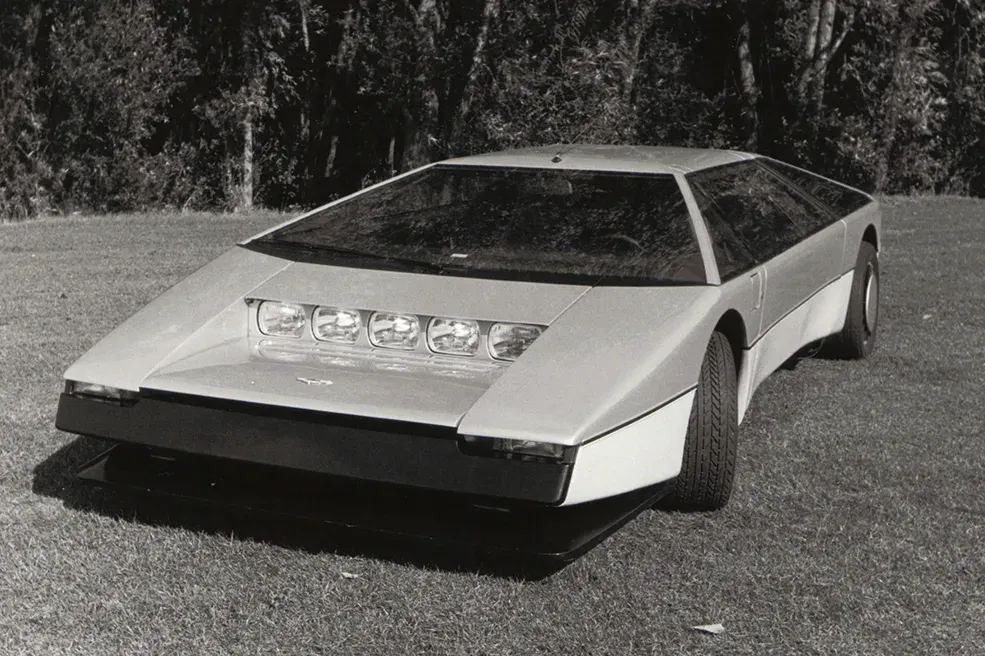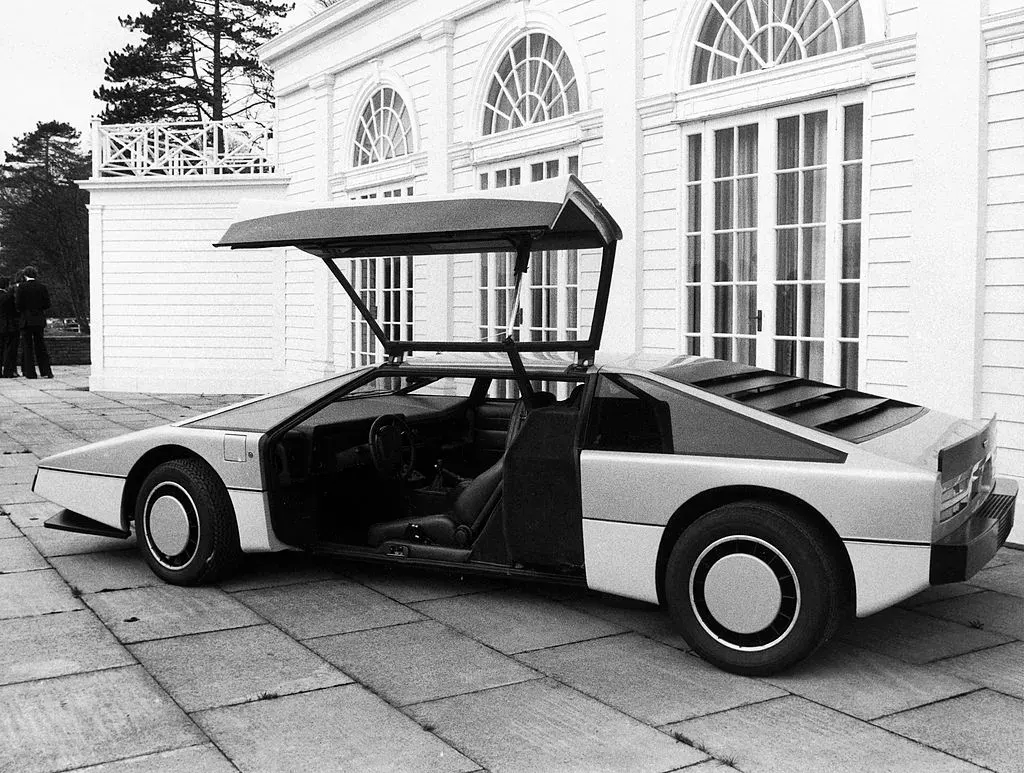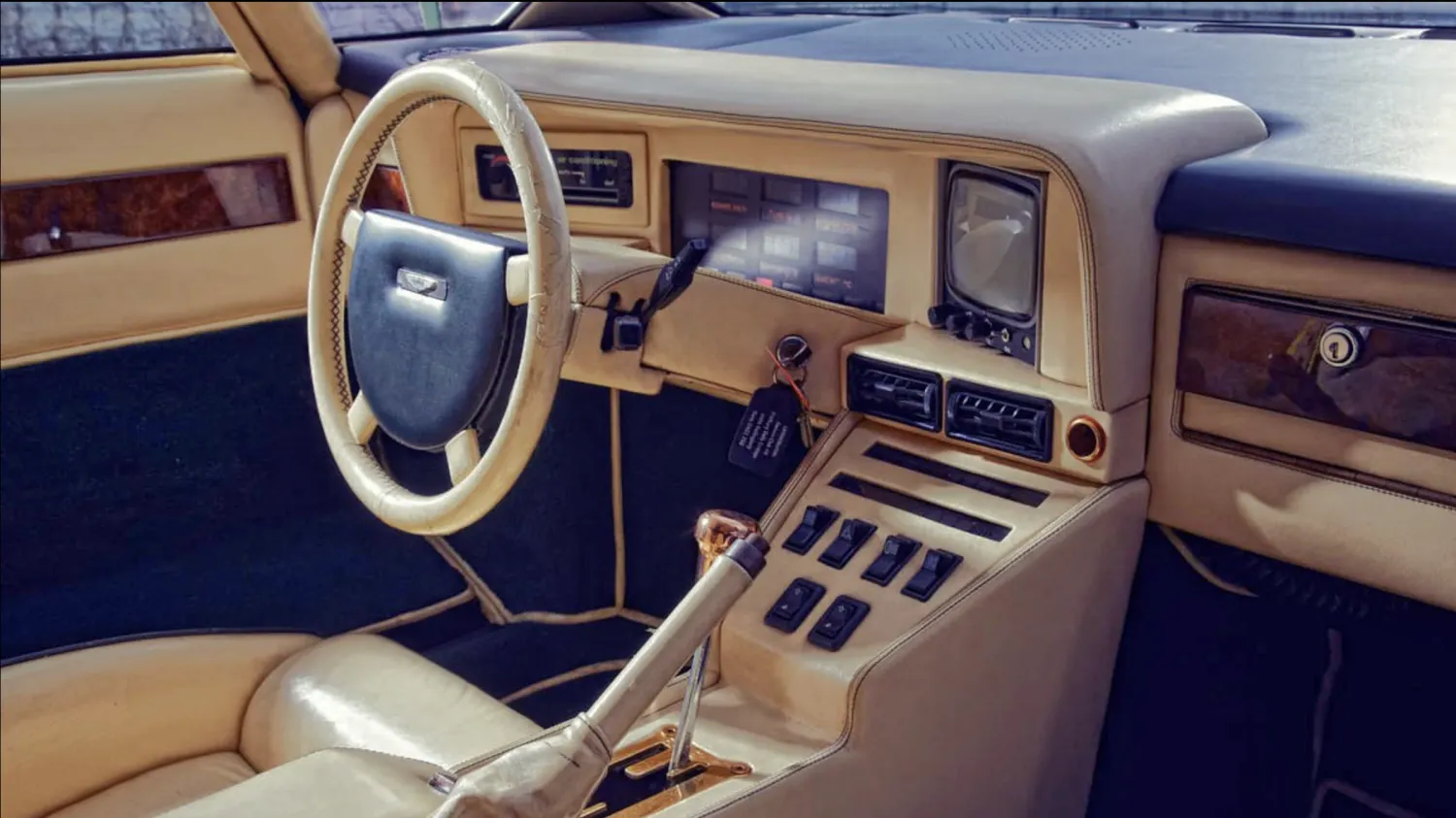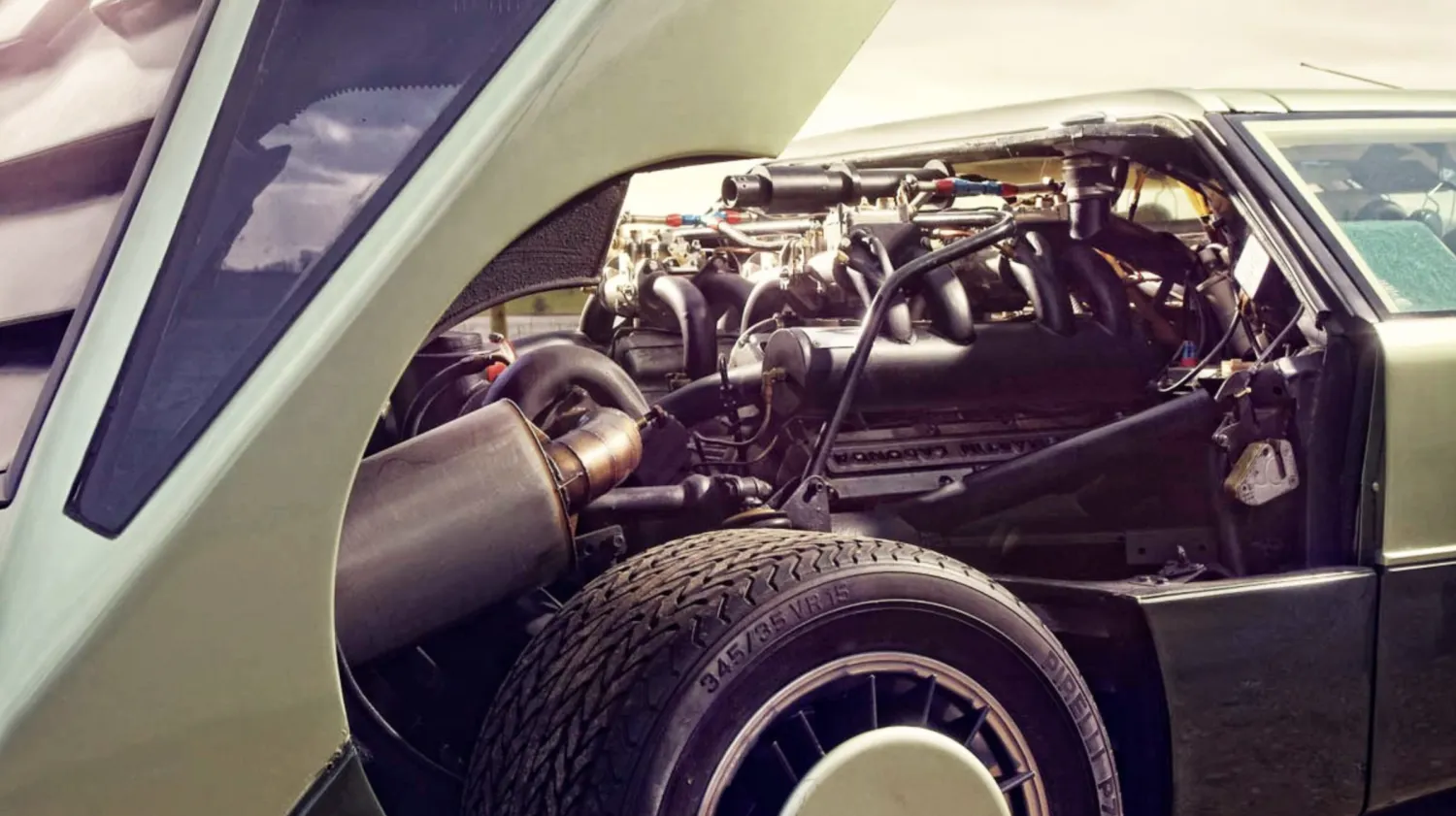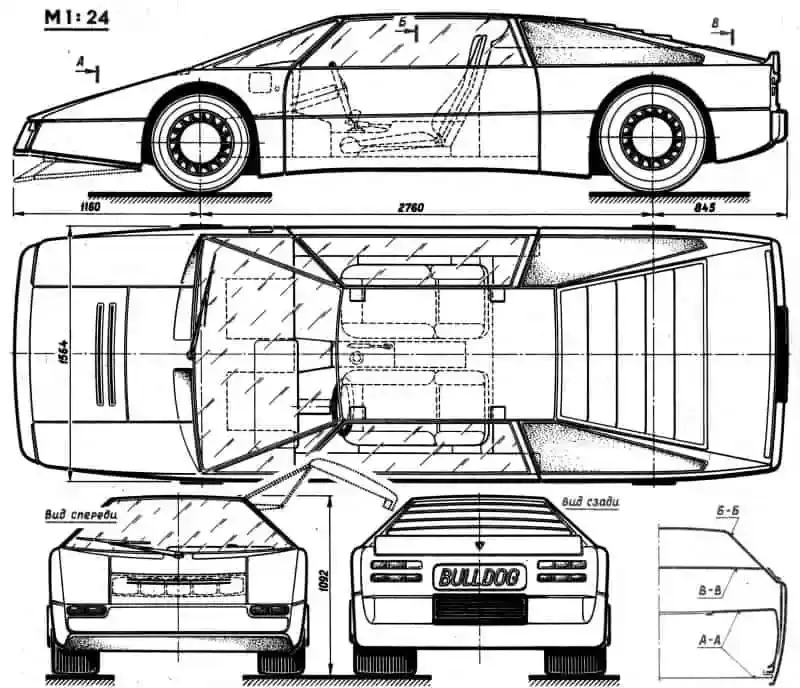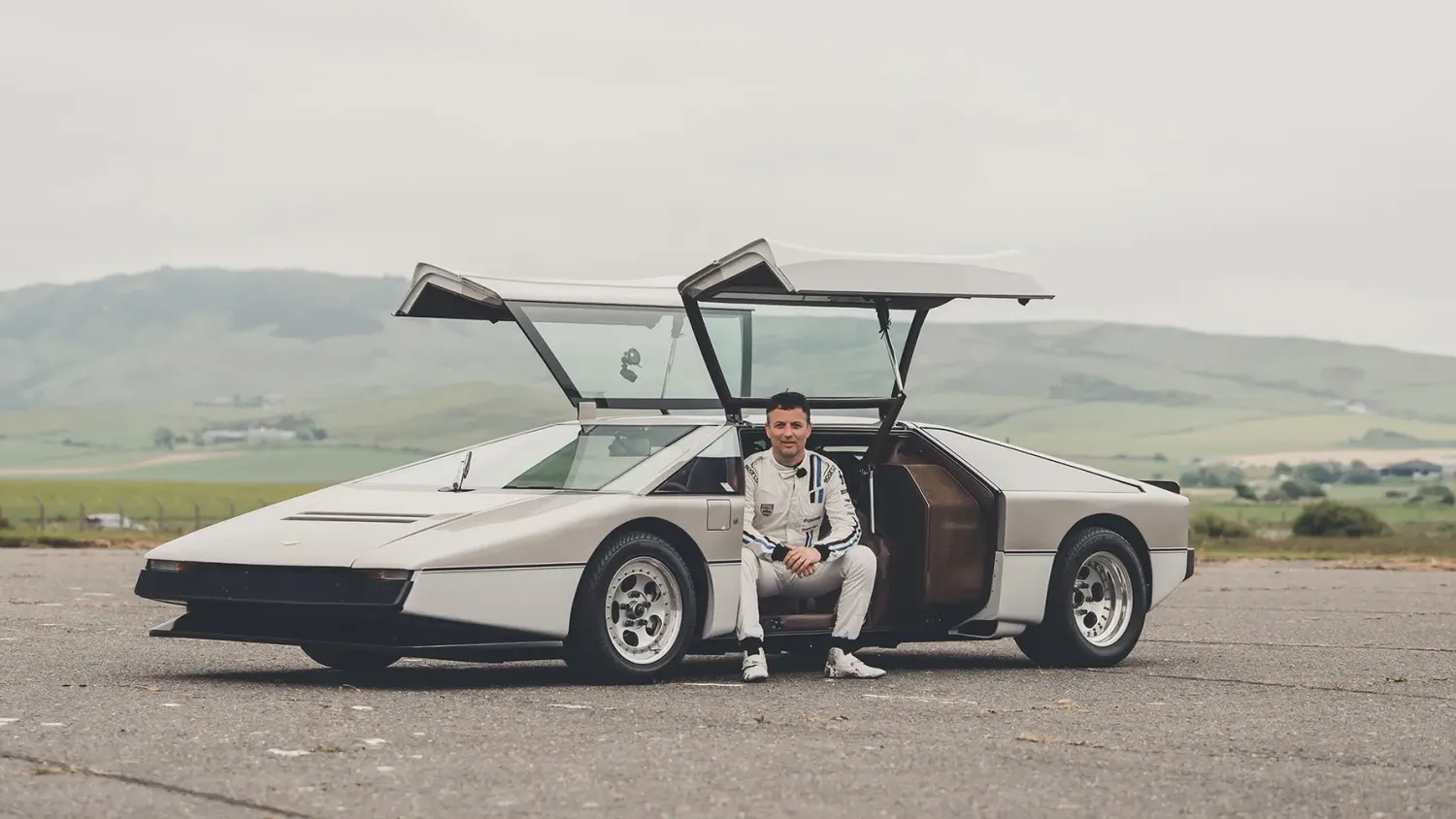The Cage Fighter in the Tweed Jacket

Every now and then, a respectable, tweed-wearing gentleman has a complete and spectacular breakdown. He shaves his head, gets a questionable tattoo, and decides to become a cage fighter. In 1979, that gentleman was Aston Martin, and the cage fighter was the Bulldog. It was a machine of such shocking, unapologetic aggression that it looked less like it had come from a factory in Newport Pagnell and more like it had arrived from a hostile planet. This wasn't a grand tourer; it was a doorstop-shaped declaration of war on the Italian supercar establishment, and it was the most brilliantly un-Aston Martin thing the company has ever done.
Aston Martin, for most of its life, had a very clear recipe: engine at the front, driven wheels at the back, and a body so beautiful it could make a grown man weep. The Bulldog took that recipe, scribbled "BORING" on it, and threw it in the bin. The project was a showcase, a "what if" moment designed to prove to the world that the chaps in the British sheds could out-crazy the Italians. They gave the job to a man named William Towns, the same designer responsible for the magnificent, wedge-shaped Lagonda saloon. He clearly had some ideas left over.
The Heart of a Monster
The madness began with the engine. Aston’s legendary 5.3-litre V8, the work of the engineering genius Tadek Marek, was unceremoniously evicted from its traditional home under the bonnet. Instead, it was placed right behind the driver's head - a layout that was pure Italian supercar and completely alien to a company famous for its front-engined grand tourers. But that wasn't enough. They then bolted not one, but two enormous Garrett turbochargers to it. The result was an eruption of power. On the test bed, the engine was apparently good for 700 horsepower. In the car, it was detuned to a slightly more sensible 600 bhp, which in 1979 was still a level of power that made Ferraris look undernourished.
A Chassis Built Like a Bridge
To handle this colossal grunt, the Bulldog was built on a chassis of immense strength. It had a massive central backbone made of huge steel tubes, a design so stiff it could probably have survived a direct nuclear strike. The suspension was a proper, grown-up racing setup, with double wishbones at the front and a De Dion tube at the rear, all designed to keep the car stable as it approached its mythical top speed. The whole thing was then wrapped in a hand-formed aluminium body of breathtaking, geometric simplicity. With a drag coefficient of just 0.34, it was incredibly efficient, making a Lamborghini Countach, with its collection of wings and ducts, look like a silly brick on wheels.
Science Fiction Styling
The car's most dramatic feature, of course, was its styling. It was a study in extreme proportions, sitting incredibly low to the ground - barely four feet high - but was immensely wide. To maintain the purity of that incredible wedge shape, the headlights, all five of them, were hidden behind a motorised panel that dropped down like the visor on a knight’s helmet. And then there were the doors. The enormous, hydraulically operated gullwings that rose up with a majestic hiss, making every arrival an event. You didn't get into a Bulldog; you made an entrance.
Inside, the madness continued. The dashboard was a festival of 1980s high-tech, with LED digital readouts and touch-sensitive buttons borrowed from the equally futuristic Lagonda saloon. It was a cabin designed to look like the cockpit of a space shuttle, a theme that was only slightly undermined by the fact it was trimmed in traditional leather and walnut, because this was, after all, still an Aston Martin.
The Noble Failure and the Long Sleep
The entire point of the Bulldog was to be the fastest production car in the world. The factory claimed a top speed of 237 mph, a number that seemed to have been simply made up. In period testing, the car was taken to the MIRA test track where it achieved 191 mph. This was faster than a Ferrari Boxer, faster than a Countach, and made it the fastest road car of its day. But it wasn't 200 mph. The magic number remained elusive.
And then, as is so often the case with Aston Martin, the money ran out. A new chairman came in, took one look at the fantastically expensive vanity project, and cancelled it immediately. The plan to build a limited run of 25 cars was scrapped. The world's only Bulldog was sold off to a Saudi prince for £130,000, and it disappeared from public view for decades.
A Promise Kept, 40 Years Late
For forty years, the Bulldog was a legend, a story of what might have been. It passed through various owners, was painted a questionable shade of green, and its mighty engine was, at one point, fitted with Weber carburettors. But in 2020, the car was bought by a determined enthusiast who decided to finish the job. A painstaking, 6,000-hour restoration was undertaken to return the car to its original, concourse specification. And then, in 2023, the restored Bulldog was taken to a former RAF base in Scotland.
The goal was simple: to finally break the 200-mph barrier. To keep the promise that Aston Martin had made four decades earlier. With a former works driver at the wheel, the 43-year-old prototype stormed down the runway and was officially clocked at 205.4 mph. The job was done. The Bulldog, the glorious, magnificent failure, had finally become a vindicated masterpiece. It may have taken forty years, but the cage fighter in the tweed jacket had finally won the fight.

